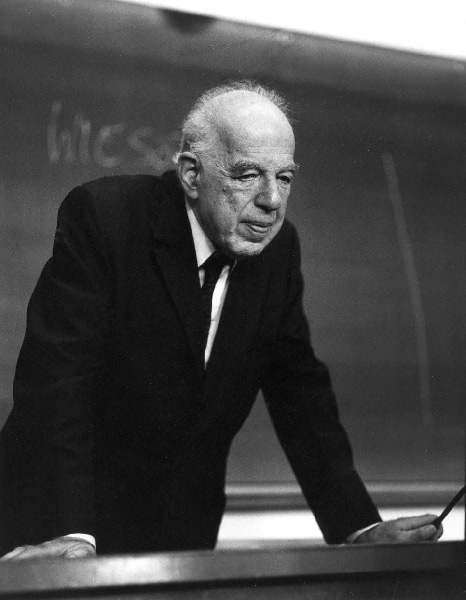Monday, June 4th, 2012
Three Favorite Quotes: Gombrich, Kandinsky, Ruskin
The end of the quarter is here. I taught my last lecture this morning. Per custom, I shared with my students my favorite quote about art. This quote is from Gombrich’s well-known art history text, The Story of Art. Gombrich discusses how one never stops learning about art and how works of art are inexhaustible. I have found these things to be true in my own experience and career. And personally, I find it exciting that there are always more things to learn about art. In fact, one of the reasons I love being a professor is that I am continually introduced to new perspectives and ideas about art by my students.
Anyhow, this evening I realized with dismay that I have never shared this quote by Gombrich on my blog! I’ve included it below, along with two other quotes that I love.
“One never finishes learning about art. There are always new things to discover. Great works of art seem to look different every time one stands before them. They seem to be as inexhaustible and unpredictable as real human beings.” – E. H. Gombrich, The Story of Art
“Color directly influences the soul. Color is the keyboard, the eyes are the hammers, the soul is the piano with many strings. The artist is the hand that plays, touching one key or another purposively, to cause vibrations in the soul.” – Kandinsky, Concerning the Spiritual in Art1

A colored engraving of John Ruskin, from "The Poetry of Architecture" publication, 1838. Image courtesy Wikipedia
“The purest and most thoughtful minds are those which love color the most.” – John Ruskin
What about you? What are your favorite quotes about art? Why?
1 Wassily Kandinsky, “Concerning the Spiritual in Art.” 1911. Another variation of above translation is available online (accessed 3 June 2012): http://books.google.com/books?id=0AV8LSrexjYC&pg=PA32&lpg=PA32&dq=Color+directly+influences+the+soul.+Color+is+the+keyboard&source=bl&ots=Rb-XcPx8ls&sig=VEyjcyqvopygZwAuZKcf0pNLlPA&hl=en&sa=X&ei=14XNT7zMHMGU2AXtp7XiAg&ved=0CFoQ6AEwBg#v=onepage&q&f=false


“Thanks to art, instead of seeing a single world, our own, we see it multiply until we have before us as many worlds as there are original artists.” Marcel Proust
I like anything that Walter Gropius wrote, including:
“The ultimate aim of the visual arts is the building! Their noblest function was once the decoration of buildings. Today they exist in isolation, from which they can be rescued only through the conscious, cooperative efforts of all craftsmen. Architects, painters and sculptors must recognise again the composite character of a building as an entity” (Bauhaus manifesto 1919).
I like this quote by the late Rona Goffen.
“Masaccio employs his powerful naturalism of space, light, and psychology to express the reality of the supernatural—and that is the primary concern of Renaissance art.”
Frank
Oh, I like all of these quotes! Thank you for sharing. I can see how these quotes particularly apply to the specific interests for some of the commenters (specifically Frank and Hels).
This morning I thought of a few more quotes that I like. I recently read Tolstoy’s “Anna Karenina” for the first time. There are a few portions of the book that deal with art, particularly when the characters Anna and Vronsky go and visit with an artist. Here are some of my favorite quotes from that section:
“[Vronsky] understood all kinds [of artistic genres] and could be inspired by one or the other; but he could not imagine that one could be utterly ignorant of all the kinds of painting and be inspired directly by what was in one’s soul, unconcerned whether what one painted belonged to any particular kind [of artistic style or genre]. Since he did not know that, and was inspired not directly by life but indirectly by life already embodied in art, he became inspired very quickly and easily, and arrived as quickly and easily at making what he painted look very much like the kind of art he wanted to imitate” (p. 465-66, Penguin Classics translation by Pevear and Volokhonsky).
***Side note: I think that it’s interesting that Vronsky was indirectly inspired “by life already embodied in art.” This makes me wonder about what types of art inspire me, how they relate to my own life. Or perhaps, on the other hand, I am indirectly inspired by the life that is embodied in the piece, but I haven’t experienced that element of “life” myself.
“Vronsky and Anna were also saying something in those soft voices in which people usually talk at exhibitions, partly so as not to insult the artist, partly so as not to say some foolishness aloud, as it is so easy to do when talking about art” (p. 473, Penguin Classics translation by Pevear and Volokhonsky).
“[The artist Mikhailov] had often heard this word ‘technique’ and decidedly did not understand what it implied. He knew that it implied a mechanical ability to paint and draw, completely independent of content. He had often noticed, as in this present praise, that technique was opposed to inner virtue, as if it were possible to make a good painting of something bad. . .But the most experienced and skilful painter-technician would be unable, for all his mechanical ability, to paint anything unless of boundaries of the content were first revealed to him” (p. 474, Penguin Classics translation by Pevear and Volokhonsky).